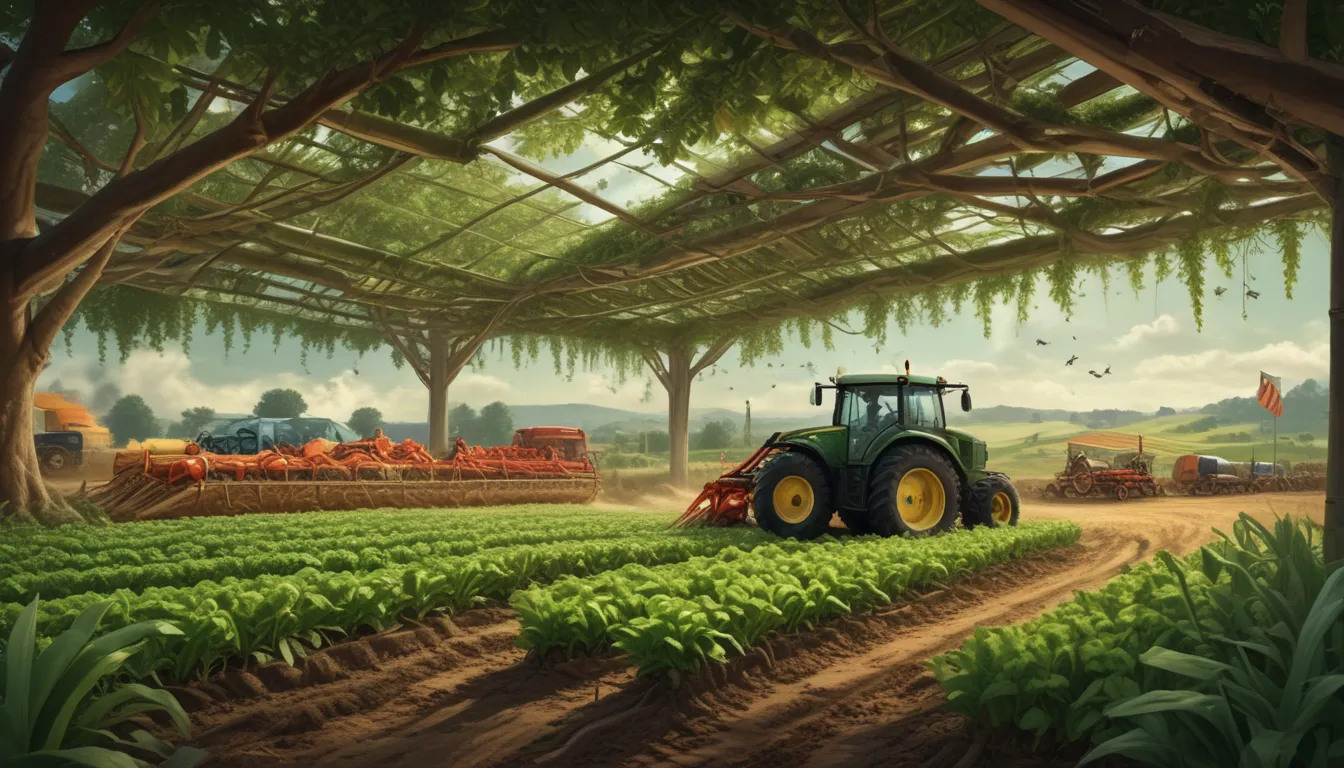A Note About Images: The images used in our articles are for illustration purposes only and may not exactly match the content. They are meant to engage readers, but the text should be relied upon for accurate information.
Welcome to a fascinating journey through the Green Revolution, a revolutionary period in modern farming that began in the 1950s. This movement aimed to increase harvests, combat hunger on a global scale, and transform agricultural practices worldwide. Join us as we delve into the key aspects, achievements, and impacts of the Green Revolution, shedding light on its significance in shaping the future of food production.
Understanding the Green Revolution
The Green Revolution marked a significant shift in agricultural practices, utilizing science and technology to enhance crop yields. Introduced in the 1950s, this movement focused on implementing High-Yielding Variety (HYV) crops, chemical fertilizers, pesticides, and machinery to optimize farming processes. By harnessing innovative techniques, the Green Revolution paved the way for increased food production and reduced hunger levels across the globe.
Unveiling the Father of the Green Revolution
Norman Borlaug, an American agronomist and Nobel Prize laureate, played a pivotal role in spearheading the Green Revolution. Known as the “Father of the Green Revolution,” Borlaug’s groundbreaking work in Mexico, India, and Africa contributed to the success of this agricultural transformation. His dedication to improving crop varieties and combating food scarcity left a lasting impact on the agricultural landscape, inspiring future generations to strive for innovation in farming practices.
Exploring the Benefits of HYV Crops
High-Yielding Variety (HYV) crops, a cornerstone of the Green Revolution, offered numerous advantages beyond increased harvests. These crops, characterized by their shorter stems and enhanced disease resistance, revolutionized farming methods. By cultivating HYV varieties of wheat, rice, corn, and soybeans, farmers could achieve higher yields, quicker growth rates, and improved nutritional content. The adoption of HYV crops heralded a new era of agricultural productivity and sustainability.
Examining the Environmental Impacts of the Green Revolution
While the Green Revolution brought about significant agricultural advancements, it also had environmental consequences. The widespread use of chemical fertilizers and pesticides contributed to biodiversity loss and ecosystem disruption. Increased carbon emissions from farming machinery further exacerbated environmental challenges, highlighting the importance of balancing agricultural productivity with sustainability practices. Addressing these environmental impacts remains crucial for the future of global agriculture.
Navigating Health Concerns Related to the Green Revolution
The use of pesticides and chemical fertilizers in Green Revolution practices raised concerns about potential effects on human health. Residual traces of these chemicals in crops could pose health risks when consumed, with ongoing studies investigating their potential links to health issues, including cancer. As we strive for sustainable agricultural solutions, ensuring the safety of our food supply and minimizing health risks must be integral considerations.
Reflecting on the Global Impact of the Green Revolution
The Green Revolution’s reach extended far beyond agricultural advancements, influencing geopolitical dynamics during the Cold War. By alleviating hunger and promoting food security in developing countries, this agricultural transformation played a crucial role in combating Communist movements. Countries like Mexico, India, and the Philippines witnessed the social and political implications of increased food production, underscoring the revolution’s broader significance.
Embracing a Sustainable Future: The Second Green Revolution
Looking ahead, the world faces the pressing need for a Second Green Revolution to address future food security challenges. With projections indicating a 70% increase in food demand by 2050, innovative solutions like genetic engineering, urban agriculture, and sustainable farming practices are under consideration. Visionaries like Bill Gates advocate for a renewed focus on agricultural innovation, emphasizing the importance of equitable solutions and social equality in shaping our agricultural future.
In conclusion, the Green Revolution stands as a testament to human ingenuity and perseverance in transforming our approach to food production. By leveraging science and technology, we have achieved remarkable progress in feeding a growing global population. As we navigate the complexities of agricultural sustainability and environmental stewardship, the lessons of the Green Revolution serve as a guiding light towards a more prosperous and sustainable future for farming and food security. Join us in celebrating the legacy of the Green Revolution and embracing a future where innovation and sustainability harmoniously coexist in our agricultural practices.






